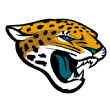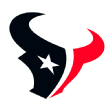Jeremy Sochan | 6-9 | PF | Baylor | Age: 18.8 | Mock draft: No. 13
Although Baylor's valiant 25-point comeback fell short against North Carolina in overtime, Sochan showed quite a bit of character during the Bears' short-lived NCAA tournament run, averaging 15 points, nine rebounds and three assists in 30 minutes while shooting 50% from 2 and 3-of-9 from 3. Sochan's energy, competitiveness, defensive versatility and toughness shined through in the second half against UNC and it's become increasingly clear that he's not only the best NBA prospect on his team, but a potential lottery pick if he can convince teams of his shooting throughout the pre-draft process. He fought until the bitter end against the Tar Heels, flying around at the top of the Baylor press, switching onto guards, battling inside, crashing the offensive glass, diving on the floor for loose balls and trying to change shots around the rim.
Sochan naysayers will question his elite NBA skill, which is fair. He has nice size at around 6-9 and 230 pounds with solid agility, yet he's not long (7-0 wingspan), isn't overly quick or vertically explosive and he's not much of a threat to score in the half court, which we saw against the Tar Heels. UNC bigs
Armando Bacot and
Brady Manek regularly closed out short and dared him to beat them from 3, which limited Sochan's downhill attacks and led to some underwhelming possessions that highlighted his lack of a reliable jumper and somewhat limited burst off the bounce (4-for-14 from the field).
Analytics models will flag his 58.9% free throw clip and sub-30% 3-point shooting. Sochan's 14.3 points per 40 minutes also rank in the bottom 15 among ESPN's top-100. Yet, Sochan attempting 4.3 threes per 40 minutes this season is encouraging as far as his confidence is concerned, and watching him shoot in person several times, he has touch and solid mechanics, even showing the ability to knock down pull-ups and mid-post turnarounds on occasion. If he can turn himself into a league-average shooter, then he'll be able to unleash the ballhandling and passing we saw this season and so regularly with the Polish junior national team.
Sochan has a chance to be an instant NBA contributor defensively as he's comfortable switching out onto guards, tracking big wings and has at least shown the willingness to slide up to the small-ball 5. He doesn't quite have the sheer reach and bounce to be a full-time protector at the 5, but the instincts are there (2.0 steals and 1.1 blocks per 40 minutes), and he's a solid positional rebounder who gravitates toward the ball and isn't afraid to mix it up in traffic. Being able to shift up to the 5 also makes him a far tougher cover offensively.
At 18 years old with the type of versatility NBA teams covet, I'd fully expect Sochan to be a potential riser in the pre-draft process as teams get to know him, dive into his FIBA tape and unearth his shooting potential. Even if he doesn't evolve into a reliable half-court scorer, Sochan could thrive in a Boris Diaw-like role as a playmaking forward who makes his teammates better, adds value with his defensive versatility and does a lot of the little things that impact winning.
-- Schmitz
TyTy Washington Jr. | 6-4 | PG | Kentucky | Age: 20.3 | Mock draft: No. 14
Kentucky suffered one of the most shocking NCAA tournament upsets in recent memory, losing to No. 15 seed Saint Peter's, with their highly regarded freshman Washington having his worst game of the season at the most inopportune time possible, scoring five points on 2-for-10 shooting with more turnovers than assists, and several poor defensive possessions.
Washington simply hasn't been the same player since suffering an ankle injury two months ago in a loss at Auburn, seeing his scoring production and efficiency fall off. How healthy he was the past two months and what caused this precipitous drop in production will be a major point of conversation for lottery teams the next three months.
Watching the ease in which Kentucky's entire offense was grinded to a halt by a MAAC team with a simple, but highly effective game plan will raise many of the same questions NBA teams have asked about other John Calipari guards in the past.
Tyrese Maxey,
Devin Booker,
Tyler Herro,
Keldon Johnson,
Hamidou Diallo,
Immanuel Quickley,
Shai Gilgeous-Alexander,
Brandon Boston Jr. and others all ended up being under-drafted after looking vastly more comfortable in the NBA than they did in college, which has caused scouts to openly discuss grading future Kentucky prospects on a curve, operating under the assumption that they simply won't be used to their full potential in college.
Were Washington's weaknesses similarly accentuated by the extreme lack of shooting and spacing surrounding him? And will being placed in a more modern offensive system not built around post-ups, offensive rebounds and mid-range jumpers help solve some of the issues he faced this season with his struggles beating opponents off the dribble and finishing in traffic?
Outside of one week in which
Sahvir Wheeler was injured (where Washington broke
John Wall and Kentucky's single-game record with 17 assists), we never quite got to see what Washington would look like as a full-time point guard, something NBA teams would surely like to know more about. Washington's ability to make reads out of ball-screens is arguably his biggest strength, but he averaged less than six pick and rolls per game, ranked 467th among division one players, per Synergy Sports Technology. Prior to Washington's injuries, he was the most efficient pick and roll player in college basketball, but he fell off the past two months.
Excuses aside, it's safe to say Washington should have done better with the opportunities he had, especially with his team's season on the brink against an overmatched opponent, and certainly on the defensive end where he actually had some nice progress relative to where he started. He'll now move onto the pre-draft process, where several polarizing guard prospects, including himself, will attempt to position themselves for consideration in the No. 10 to No. 20 portion of the draft.
-- Givony
Malaki Branham | 6-5 | SG | Ohio State | Age: 18.8 | Mock draft: No. 16
Branham looked like the best player on the floor against Villanova, despite only being a freshman. Ohio State has gradually shifted most of their offense to run through him as the season has progressed, and he did a great job of making shots keep the game close before the Buckeyes eventually bowed out. Branham's size, frame, length, scoring instincts and shot-making prowess off the dribble (44% FG%) and with his feet set (43%) make his game look seamlessly translatable for what the NBA is looking for at his position. He got to his spots in the mid-range and rose up beautifully with his high release point, and showed he can do a little more than that too by facilitating for others and showing competitiveness defensively one-on-one. While he has some things to work with as a ball handler and off-ball defender, the fact that he's 18 years old, has made such impressive strides as the season moved on and plays with a unique combination of aggressiveness and poise could put him in lottery conversations.
-- Givony
Kennedy Chandler | 6-1 | PG | Tennessee | Age: 19.5 | Mock draft: No. 17
No. 3 seed Tennessee lost in the Round of 32 to No. 11 seed Michigan, but it's difficult to call Chandler's performance over the past two months anything but a major win, as he clearly established himself as one of the best point guards in college basketball after an up-and-down start.
Chandler has played mistake-free, highly efficient basketball over the past 15 games, looking on another level confidence-wise, shooting 47% from beyond the arc and playing lockdown defense. Winners of 13 of their past 14 games going into Saturday, Tennessee shot just 2-for-18 from 3, with Wolverines coach Juwan Howard electing to send a series of aggressive traps and double teams at Chandler and force anyone but him to beat them, something that proved to be a winning strategy.
Chandler proved his point, showing the type of burst, ball-handling, creativity and aggressiveness every NBA covets. He did a masterful job of playing off hesitation moves and changing gears to get anywhere he wanted on the floor, dished out nine assists, hit an array of pull-up jumpers, finished skillfully around the basket and got in passing lanes repeatedly. Although his team didn't win, it was encouraging to see how assertive Chandler was all game long after being criticized earlier in the season for being too tentative on the floor and too quiet off it -- areas he's made major strides with.
After a roller-coaster start, Chandler's draft stock is back where it started at the beginning of the season, vying to be the first point guard off the board after Jaden Ivey. NBA teams have long been reluctant to hand the keys of their team over to smaller guards, which is why measurements and the way he performs in workouts against other touted prospects at his position will ultimately determine when his name is called. Chandler took a circuitous route but appears to have come out a much better player after a strong development season that will likely position him well going into his NBA rookie season.
-- Givony
Blake Wesley | 6-5 | SG | Notre Dame | Age: 19.0 | Mock draft: No. 20
Notre Dame's surprise NCAA tournament run came to an end as the No. 1 defense in college basketball, Texas Tech, held potential first-round pick Wesley to just 3-for-14 shooting in 32 minutes, putting an end to a freshman campaign that featured everything from remarkable highlights to head-scratching lows. Wesley shot 13-for-37 from 2 and 0-for-8 from 3 against Rutgers, Alabama and the Red Raiders while committing more turnovers than assists. While he tried to relentlessly attack Texas Tech with downhill attacks, Wesley ran out of gas, showing where he has the most room to improve in the process.
Despite the inefficiency, Wesley's talent still popped, particularly in Notre Dame's win over Alabama (18 points on 14 shots), where he looked like the best prospect on the floor. He has NBA-caliber burst off the bounce, proved comfortable rising up in mid-range spots. He's looked far more competitive defensively as the year has gone on, using that quickness, length and solid instincts to add value both on and off the ball, making plays in the passing lanes, blowing up handoffs and proving more than capable containing the ball in 1-on-1 situations.
But the game still moves too quickly for the 19-year-old -- Wesley committed several costly turnovers in the last five minutes of Sunday's loss. He's still searching for the right blend between scoring and playmaking, as he regularly missed kick outs or drop offs once he got a piece of the paint. Among the 143 players to take at least 130 shots at the rim in the half court, Wesley ranks 142nd in efficiency. He will also have to prove himself as a perimeter shooter throughout the pre-draft process, as he finished the year at 30.3% from 3.
Wesley is a big-time talent who has NBA feet and shift off the dribble, can get a piece of the paint at will and has at least shown enough off the dribble shooting potential to suggest there's room to improve. With a strong pre-draft process, it's not out of the question that Wesley gets looks throughout the teens, especially if he shoots the ball well. But for those who were skeptical about his NBA readiness and consistent impact, Wesley's showing against Texas Tech didn't do anything to ease those concerns.
-- Schmitz











